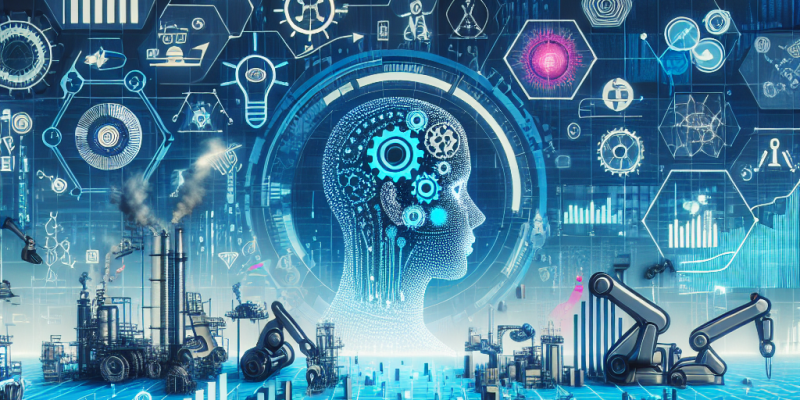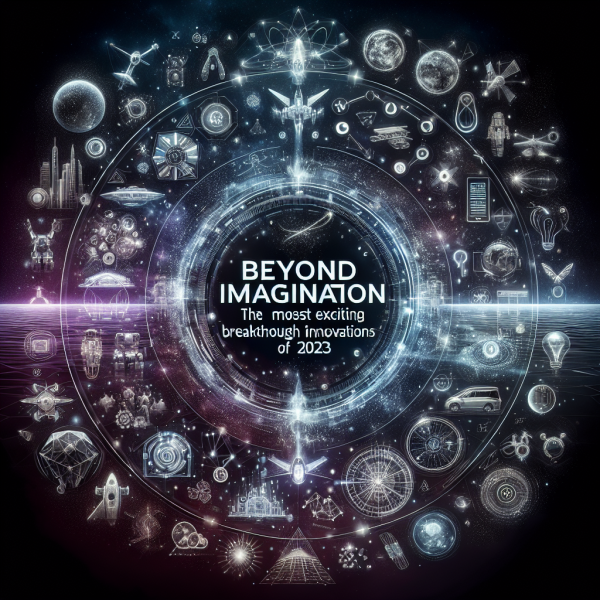The Future of Industry: Key Insights from 2023’s Market Data

The Future of Industry: Key Insights from 2023’s Market Data
As we move further into the 21st century, 2023 has emerged as a pivotal year for industries worldwide. The intersection of technological advances, consumer expectations, and robust market dynamics has created a transformative landscape that companies must navigate carefully. Insights gleaned from 2023’s market data reveal trends shaping the future of industry across various sectors. In this article, we explore the key takeaways that may define the trajectory of businesses in the coming years.
1. Digital Transformation Reaches New Heights
2023 has been marked by an accelerated pace of digital transformation. Businesses across all sectors have embraced emerging technologies such as artificial intelligence (AI), machine learning, and the Internet of Things (IoT). Data indicates that over 70% of organizations are integrating AI into their operations, leading to increased efficiency, reduced costs, and improved customer experiences.
For instance, in manufacturing, the adoption of IoT sensors has optimized supply chains and improved predictive maintenance, resulting in significant downtime reductions. Retailers, on the other hand, are personalizing shopping experiences like never before, leveraging big data analytics to tailor offerings to individual consumer preferences.
2. Sustainability as a Core Business Strategy
Sustainability has transitioned from a buzzword to a core component of business strategy in 2023. Market data reveals that companies prioritizing environmental, social, and governance (ESG) criteria see substantial returns on investment. A report by the Global ESG Network noted that firms with strong sustainability practices outperformed their competitors by 22% in the stock market.
Consumers are increasingly favoring brands with transparent and responsible supply chains. As a response, companies in industries ranging from fashion to technology are committing to sustainability goals, implementing circular economy practices, and innovating products with reduced environmental impact. This trend is not only attracting conscientious consumers but is also becoming essential for attracting investment capital.
3. Remote Work and Workforce Flexibility
The COVID-19 pandemic reshaped the traditional workspace, and in 2023, remote work continues to influence industry dynamics. Organizations are increasingly adopting hybrid models, enabling employees to work remotely while maintaining in-office collaborations. According to a survey by the Future Work Institute, 65% of employees prefer flexible work arrangements.
In response to this shift, companies are rethinking workplace design and investing in collaboration technologies. This flexibility isn’t just a perk anymore; it’s becoming integral to attracting top talent and maintaining employee engagement, especially among younger generations who prioritize work-life balance.
4. The Rise of Automation and Robotics
As labor shortages persist in various sectors, automation and robotics have gained traction in 2023. Industries such as logistics and manufacturing are deploying robots and automated systems to maintain productivity levels. Data indicates that the global robotics market is expected to grow by over 20% annually, driven by advancements in technology and reduced costs.
Automation is not solely about replacing human labor; it is increasingly viewed as a means to augment human capabilities. Collaborative robots, or cobots, are designed to work alongside human workers, enhancing efficiency while allowing employees to focus on more strategic tasks.
5. Increased Focus on Cybersecurity
With digital transformation comes an increased vulnerability to cyber threats. 2023 has witnessed a surge in cybersecurity concerns, prompting businesses to invest heavily in safeguarding their digital assets. Market data shows that cybersecurity spending has soared, with an estimated increase of 25% compared to the previous year.
A proactive approach to cybersecurity now includes regular audits, employee training, and adopting Zero Trust models. Companies understand that maintaining customer trust and protecting sensitive data is imperative for long-term success. As regulations around data protection tighten globally, compliance with security measures is also becoming more critical.
6. The Health and Wellness Industry Boom
The health and wellness sector has continued to thrive in 2023, driven by a heightened focus on mental and physical well-being. Consumer demand for wellness products, fitness solutions, and mental health resources has surged. The global wellness market has been estimated to exceed $5 trillion, with companies innovating to meet diverse consumer needs.
From telehealth services to personalized health applications, industries are adapting to provide solutions that align with consumer health consciousness. Businesses that prioritize wellness are not only contributing positively to society but are also finding lucrative opportunities in a booming market.
Conclusion
The insights from market data in 2023 highlight an era of profound change across industries. Embracing digital transformation, committing to sustainability, adapting to flexible work arrangements, leveraging automation, prioritizing cybersecurity, and responding to wellness trends are not just business strategies but essential tenets for future success.
As we continue into this transformative decade, businesses that adapt to these evolving trends will position themselves to thrive in an increasingly competitive and fast-paced market landscape. The future of industry lies not just in technological advancements but in the holistic approach to integrating those advancements with consumer needs and societal responsibilities.














